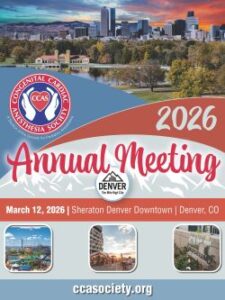Authors: Amy Babb, MD AND Amanpreet Kalsi, MBBS, FRCA - Vanderbilt University Medical Center - Monroe Carell Jr. Children's Hospital at Vanderbilt
A teenage boy with history of dilated cardiomyopathy supported with a continuous flow left ventricular assist device (LVAD) presents for heart transplant. After separation from cardiopulmonary bypass (CPB), he is hypotensive despite adequate biventricular function, normal central venous pressure, and epinephrine, vasopressin, and norepinephrine infusions. Which of the following factors is MOST likely associated with vasoplegia in this patient?
EXPLANATION
Vasoplegia presents as severe hypotension secondary to vasodilation with low systemic vascular resistance (SVR) despite normal or elevated cardiac index. Vasoplegia after cardiac surgery is a known entity associated with significant morbidity and mortality in adults1. In addition, vasoplegia immediately post cardiac surgery may be difficult to diagnose when balancing the other potential causes of shock such as myocardial failure or hemorrhage.
Patients undergoing procedures with CPB are at risk of vasoplegia secondary to multiple proinflammatory insults, including surgical trauma, transfusion, and exposure to foreign materials from the circuit. Patients preoperatively supported with continuous-flow ventricular assist devices (CF-VADs) are at even higher risk for vasoplegia post-transplant2. Proposed mechanisms for this include a unique proinflammatory profile and dysregulation of vasomotor tone thought secondary to continuous flow physiology.
A study by Sacks et al. in 2019 describes a small cohort of pediatric patients supported preoperatively with either pulsatile or continuous flow ventricular assist devices who met criteria for vasoplegia after orthotopic heart transplant3. One third of all patients were diagnosed with vasoplegia, 79% of which had been supported with a CF-VAD prior to transplant. This article also proposed a definition of pediatric vasoplegia using the typical monitors and parameters seen in pediatric patients. The definition of pediatric vasoplegia published in their study consisted of:3
1. Use of any of the following medications:
a. Norepinephrine, vasopressin, high dose epinephrine (>0.08 mcg/kg/min), or high dose dopamine (>8 mcg/kg/min)
2. Diastolic blood pressure below the 10th percentile
3. Systolic ejection fraction greater than 60% on echocardiogram
4. Right atrial or central venous pressure greater than 5 mmHg
5. Absence of positive blood or urine cultures
This small study concluded that preoperative continuous-flow ventricular assist devices are a likely risk factor for post-operative vasoplegia after heart transplant in the pediatric population. Because there is no strong consensus on the definition of vasoplegia in either adults or pediatrics4, understanding the risk factors may help with early identification of vasoplegia and prevent delay in treatment. Both dilated cardiomyopathy and pulmonary hypertension may occur concomitantly with vasoplegia, especially in the setting of prolonged CPB, but are not recognized independent risk factors.
REFERENCES
1. Asleh R, Alnsasra H, Daly RC, et al. Predictors and Clinical Outcomes of Vasoplegia in Patients Bridged to Heart Transplantation With Continuous-Flow Left Ventricular Assist Devices. J Am Heart Assoc. 2019;8(22):e013108. doi:10.1161/JAHA.119.013108
2. Patarroyo M, Simbaqueba C, Shrestha K, et al. Pre-operative risk factors and clinical outcomes associated with vasoplegia in recipients of orthotopic heart transplantation in the contemporary era. J Heart Lung Transplant. 2012; 31(3): 282-287.
3. Sacks L, Hollander S, Zhang Y, et al. Vasoplegia After Pediatric Cardiac Transplantation in Patients Supported with Continuous Flow Ventricular Assist Devices. The Journal of Thoracic and Cardiovascular Surgery. 2019; 157(6): 2433 – 2440.
4. Ortoleva J, Cobey F. A Systematic Approach to the Treatment of Vasoplegia Based on Recent Advances in Pharmacotherapy. Journal of Cardiothoracic and Vascular Anesthesia. 2019; 33(5): 1310 – 1314.
